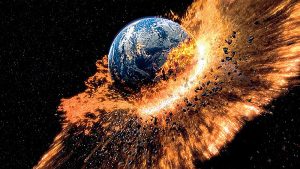
Research from the Curtin WA School of Mines has led scientists to believe that volcanic eruptions that occurred more than 100 million years ago were so powerful that they could project sand-sized crystals from the east coast of Australia to as far away as Western Australia.
The study, led by Dr Milo Barham of the Department of Applied Geology, originally set out to examine WA grains to find out how the southern margin of Australia evolved during and after separation from Antarctica. However, the work took on a new direction after the discovery of sand-sized zircon crystals unlike any previously found in WA.
Using advanced geochemical fingerprinting of individual crystals, as well as in-depth analysis of the sediments and their fossils (for the age and original environment of the deposit), Dr Barham and his colleagues were able to deduce that the crystals found in WA were the products of volcanic air fall — despite being 2300km away from the remnants of their source volcanoes in eastern Australia.
Dr Barham said the grains, which were sourced from boreholes drilled beneath the Nullarbor Plain in remote south-eastern WA, implied the occurrence of super-eruptions — extremely explosive events with magnitudes tens to hundreds of times greater than anything in documented human history.
“Such distal projection of a unique volcanic mineral population demonstrates that super-eruptions were occurring in eastern Australia approximately 106 million years ago, during the break-up of the supercontinent Gondwana,” Dr Barham said.
“The arrangement of land masses and atmospheric circulation at the time indicates that the recorded eruptions occurred during the southern hemisphere winter, when strong winds from the east would have pushed volcanic ejecta towards the west.”
Dr Barham said these super-eruptions were capable of spreading tera-tonnes of volcanic material over thousands of kilometres, while affecting global climate systems.
“These super explosions are well known from the relatively recent past and have even been implicated in the evolution of our species,” Dr Barham said.
“However, the incomplete nature of geological sequences means that recognising these earth-shattering volcanic events is difficult in deeper geological time, millions to billions of years ago.
“If an event of this magnitude were to happen today it would have devastating effects on our society and likely would drive massive crop failures, famine and war.”
The new study has been published in the August 2016 edition of the journal, Geology.
Reference:
M. Barham, C.L. Kirkland, M.J. O’Leary, N.J. Evans, H. Allen, P.W. Haines, R.M. Hocking, B.J. McDonald, E. Belousova and J. Goodall. The answers are blowin’ in the wind: Ultra-distal ashfall zircons, indicators of Cretaceous super-eruptions in eastern Gondwana. DOI: 10.1130/G38000.1
Note: The above post is reprinted from materials provided by Curtin University.










